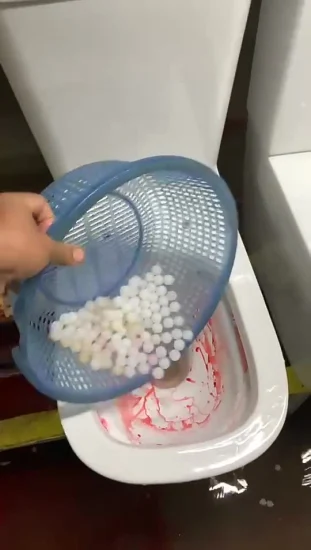Is it Safe to Dispose of Food Waste in the Toilet?
Is it Safe to Dispose of Food Waste in the Toilet?
Blog Article
This post following next on the subject of What Can Happen If You Flush Food Down the Toilet? is unquestionably compelling. Try it and draw your own personal results.

Intro
Lots of people are typically faced with the dilemma of what to do with food waste, especially when it involves leftovers or scraps. One typical concern that develops is whether it's all right to flush food down the toilet. In this article, we'll explore the reasons that people could take into consideration flushing food, the repercussions of doing so, and different approaches for proper disposal.
Reasons why individuals might think about purging food
Absence of awareness
Some people may not recognize the potential injury caused by purging food down the commode. They may erroneously believe that it's a harmless practice.
Benefit
Purging food down the toilet might seem like a quick and easy option to disposing of unwanted scraps, particularly when there's no neighboring trash bin available.
Idleness
Sometimes, individuals might merely pick to flush food out of sheer negligence, without thinking about the effects of their actions.
Effects of flushing food down the toilet
Environmental influence
Food waste that winds up in waterways can add to pollution and harm marine ecological communities. In addition, the water utilized to purge food can stress water resources.
Pipes concerns
Flushing food can bring about clogged pipelines and drains, creating expensive pipes repair services and hassles.
Kinds of food that ought to not be flushed
Coarse foods
Foods with fibrous appearances such as celery or corn husks can get tangled in pipelines and cause clogs.
Starchy foods
Starchy foods like pasta and rice can take in water and swell, causing obstructions in pipelines.
Oils and fats
Greasy foods like bacon or cooking oils must never be flushed down the commode as they can strengthen and cause clogs.
Appropriate disposal techniques for food waste
Making use of a garbage disposal
For homes outfitted with garbage disposals, food scraps can be ground up and purged via the plumbing system. Nevertheless, not all foods appropriate for disposal in this way.
Recycling
Particular food packaging products can be recycled, decreasing waste and lessening ecological effect.
Composting
Composting is an eco-friendly means to take care of food waste. Organic products can be composted and utilized to enrich soil for gardening.
The significance of correct waste management
Reducing ecological harm
Proper waste monitoring methods, such as composting and recycling, aid decrease contamination and preserve natural deposits for future generations.
Shielding plumbing systems
By avoiding the technique of flushing food down the commode, property owners can stop expensive plumbing fixings and maintain the integrity of their pipes systems.
Conclusion
Finally, while it may be appealing to flush food down the commode for comfort, it is essential to recognize the prospective repercussions of this action. By embracing proper waste management techniques and getting rid of food waste properly, individuals can contribute to healthier pipes systems and a cleaner setting for all.
FLUSH FOOD DOWN THE TOILET?
FLUSHING FOOD CAN CAUSE BLOCKED DRAINS IN YOUR HOME
All of the plumbing fixtures in your home are connected to the same sewer pipe outside of your home. This outdoor sewer pipe is responsible for transporting all the wastewater from your home to the Council sewer mains. Even small pieces of food that go down the kitchen sink can cause problems for your sewer. It should therefore be obvious that flushing larger bits of food, such as meat, risks a clog in either the toilet itself or the sewer pipes. Flushing greasy food is even more problematic because oil coagulates when it cools, coating the interior lining of your pipes.
THE TOILET IS NOT A BIN
Food isn’t the only thing that people shouldn’t be flushing down the toilet. People use the toilet to dispose of all kinds of things such as tampons, makeup wipes, dental floss, kitty litter and even underwear. Water goes to great lengths to educate residents about the high costs and stress placed on wastewater treatment systems simply from people flushing the wrong stuff down the toilet. It costs taxpayers millions of dollars each year, and homeowners thousands in blocked drain repairs.
FLUSHING FOOD IS A WASTE OF WATER
Flushing food is a waste of our most precious resource - water. In June this year Level 1 water restrictions were introduced to protect water supply from drought conditions. Much of New South Wales continues to be affected by prolonged drought with recent figures revealing up to 97 per cent of the state remains in drought. Depending on whether you have a single or dual flush toilet, every single flush uses between five and 11 litres of water. In the current climate this is a huge amount of water to be wasting on flushing food that should be placed in the bin (or better yet, the compost).
https://www.jabplumbingsolutions.com.au/blog/can-you-flush-food-down-the-toilet

We were guided to that editorial about Think Twice Before Flushing Food Down Your Toilet from a buddy on another web page. If you please take the opportunity to share this blog if you liked it. Bless you for your time. Please come visit our blog back soon.
Call Today Report this page